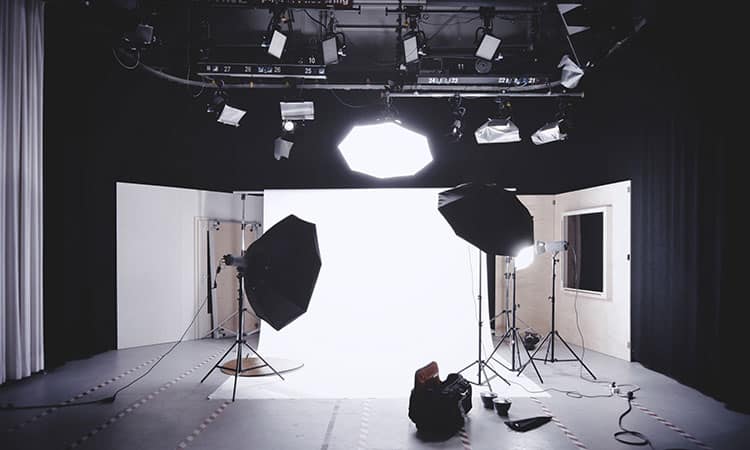Visuals Matter: 8 Photography Tips for Marketers
by Rachel Pluck
Insights / Digital Marketing /

When it comes to marketing, emotion matters.
Whether you’re developing a website, creating a social media post or crafting an enewsletter, your message needs to be impactful and inspiring.
One of the most effective ways to evoke emotion in your audience is through powerful imagery.
But not all images are created equal.
To make sure your message hits home, use the following criteria to capture and select the right picture for your project or campaign.
Pre-production
Before you even think about hiring a photographer or snapping your first photo, there are a few tasks you’ll need to complete in the pre-production phase of any marketing project.
1. Establish your purpose
First things first, you need to get a clear idea of what you’ll be using the images for. You need to establish your purpose.
Once you’ve figured out why you need these specific photos, be sure to inform everyone involved on the project, including photographers and designers, so that everyone is on the same page.
This will help to ensure that you get the right pictures that best match your marketing message, whatever that may be.
2. Know your medium
Think about what these photos will be used for.
Are you getting ready to run a full-page print ad in a magazine or are you setting up social media content for the next few months?
Knowing exactly how the images will be used in the future gives you an idea of the scale, layout and quality you’ll need.
If you fail to plan for medium, you may end up with a folder full of images you can’t actually use.
3. Don’t leave photography until the last minute
There is nothing worse than coming up with a brilliant marketing idea and spending hours crafting your message only to realize you have no visual elements to back it up.
Getting quality photography takes time. Don’t rush into a photoshoot without planning or leave photo selection until the last minute.
Instead, start thinking about photo needs as soon as you begin a project so you can build in time for working with a photographer (and designer, if applicable).
During production
Photo shoot day is finally here! Keep these tips in mind while taking photos or working with your chosen photographer.
4. Framing your shot
Framing in photography refers to the arrangement or presentation of different visual objects in a photo, and it can make or break your image.
One of the most popular rules of thumb for framing photos is “the rule of thirds.”
Rather than sticking the object of your photo right in the middle of the frame, using the rule of thirds you would divide your subject area into a 3×3 grid. Then, place the object of your photo at one of the points in which your grid lines intersect.
This practice allows you to capture more of the scenery and stage the photo in a way that is more visually pleasing and interesting to the eye.
5. Getting the best lighting/colors
Shooting in different light can be a struggle. Sometimes an indoor scene is super dim or an outside shoot is so bright it whitewashes your subject.
Ideally, you want whatever light source you’re working with to be at your back so that it doesn’t create a hotspot or bright light in your photograph or cause your camera’s meter to underexpose the picture, making it too dark.
The best way to avoid this? Test out your scene! Move around during your photoshoot and move your subject around as well until you find a spot where the light works in your favor.
If you’re shooting indoors, consider an external flash that you can set and replace based on your scene staging.
It’s okay to shoot way more images than you think you’ll need. Having a variety to edit in post-production is a lot better than missing out on the perfect photo!
6. Highlighting your product or service
At the end of the day, the reason you’re trying to capture a great image is to better sell your product or service.
So how can you stage your subject in a way that is appealing without being too obvious?
While you don’t want to simply set your product smack dab in the middle of your shot (see rule of thirds above!) you do want to remove any distracting elements that might take away from your message.
If you’re hosting your own photoshoot, you have the advantage of being able to control your background and your brand, so be sure to do so.
Don’t be afraid to get creative. Utilize an interesting depth of field to highlight product features or intricate elements that audience wouldn’t be able to see otherwise. Find unique ways to showcase what your product or service does for people by including models in your photos.
The possibilities are endless! Just make sure you stay on brand and on message.
7. How to make your photos look authentic (AKA not stocky)
The benefit of having the budget to take your own images or hire a photographer to do so is that you have full control over the images being captured.
You want to avoid making your images look like a stock photo anyone could download off the internet for a small fee.
The best way to avoid the stock look is to be authentic to your brand. Choose a background setting that actually makes sense for the product or service you’re marketing. Choose a model that best represents your target demographic. Test out different photography techniques to figure out which one suits your message the best.
(In a pinch and need to find a stock photo? Here are some of our favorite sites for stock photos.)
Post-production
Your photo shoot is complete and now you have hundreds of photos to sift through. Here’s our top tip on choosing the right photo for your needs.
8. Choose something eye-catching
If you want your message to resonate with your audience (and we know you do if you’ve read this far) make sure to choose an engaging image that will stand out from the crowd.
Culling hundreds of photos can feel overwhelming — we recommend taking a quick pass through the photos, starring your favorites and then taking some time away from the screen. Come back later with a fresh eye to help narrow down your image choices.
The fun doesn’t stop there! Of course, in post-production, you can use all types of editing techniques to jazz up your photos even more. If you or someone on your team has design skills, consider using artsy edits or cool coloring effects to make your photo pop.
On the other hand, if you’re not a Photoshop wizard, you can use free and user-friendly photo editing tools like Canva to create fun graphics with your photos.
Remember: Visuals will always matter. Humans are naturally drawn to compelling photography. (It’s proven by science!)
Now is the perfect time to start thinking about your future photography needs so you can wow your audience and stand out from your competitors.
Did we forget anything? Tweet us your best photography tips — we’d love to hear them!
Photo by Alexander Dummer on Unsplash




